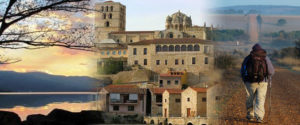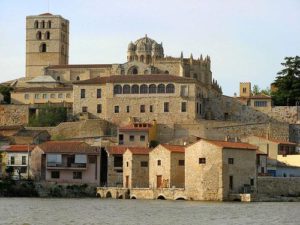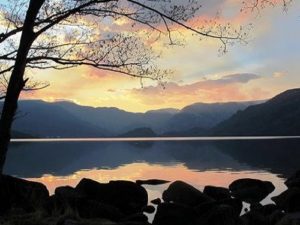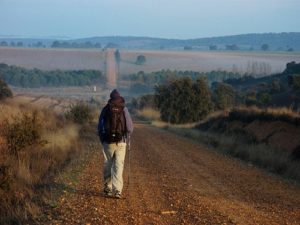When you come to Zamora, a visit to the province’s different districts is a must, given that each one is different and has its own unique and special characteristics. Each district forms a large provincial route that will surprise visitors with its original features and varied landscapes, customs and people.
–– La Ruta de la Montaña (The Mountain Route): This route passes through the districts of Sanabria and Carballeda and represents the province’s wildest and most mountainous landscapes, with the ‘Lago de Sanabria’ Natural Park as the most emblematic tourist attraction. The route is also full of artistic references – the historical-artistic site of Puebla de Sanabria, the numerous villages full of traditional architecture and the monastery of San Martín de Castañeda. Its festivals and ‘romería’ processions, its traditions and gastronomy, all remind us of nearby Galicia.
–– La Ruta de la Culebra (The Culebra Route): This route combines landscapes, such as the National ‘Sierra de la Culebra’ Hunting Reserve, with other artistic, traditional and ethnographic locations, such as the Villardeciervos historical-artistic site and Moveros, a village that specialises in the production of pottery. As for food and drink, highlights include the excellent veal from Alista and the tasty and sought-after wild mushrooms from the forest.
– La Ruta de la Plata (The Silver Route): This route crosses the province from south to north and includes the monuments of the capital, Benavente and the Cistercian monastery of Santa María de Moreruela. The lakes at Villafáfila, in Tierra de Campos, are home to a wide range of migrating birds.
– La Ruta del Duero (The Duero Route): This route crosses Zamora from east to west, starting in Toro, one of the best examples of a medieval town. Zamora was declared a historical-artistic site with its range of monuments, including the Romanesque-style collegiate church and palaces, convents and emblazoned houses, without forgetting its exquisite D.O. wine. The route ends in the district of Sayago, which includes the impressive Duero river gorge on its descent down to Portugal and the ‘Arribes del Duero’ Natural Park.
– La Ruta de los Valles de Benavente (The Benavente Valleys Route): Paths cross as Benavente signals the end of the Vía de la Plata (The Silver Way) in Zamora province as it heads for the lands of León. An important hub in Spanish history from the 14th to the 19th century.
The surrounding valleys of the Tera, Orbigo, Cea and Eria rivers provide a complete architectural route, taking us from Neolithic times to the Romanisation of these lands.




